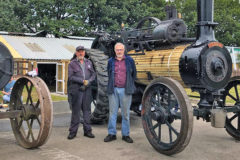Morris Minor GPO and PO vans
Posted by Chris Graham on 9th January 2022
The Morris Minor vans used by the GPO and Post Office were a little bit different and had some unusual duties too, as Russ Harvey explains.
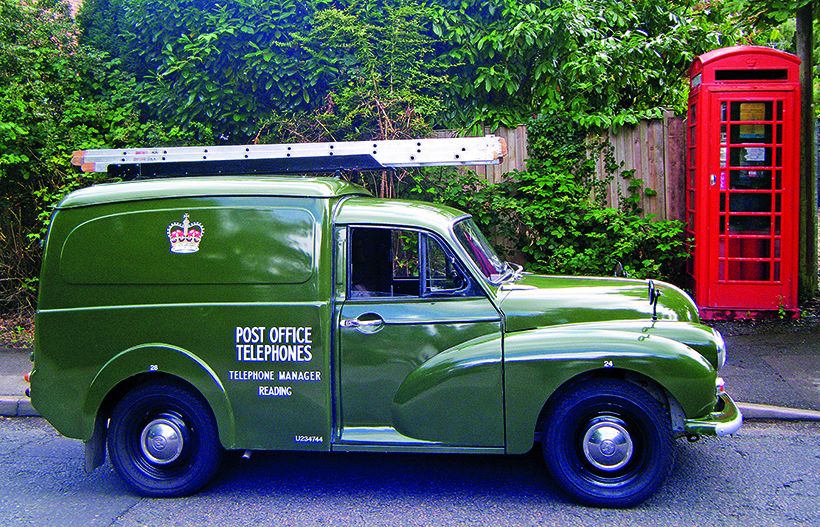
Series V 1967 engineer’s van, complete with ladders and rack.
The General Post Office (GPO) and later the Post Office (PO) were by far the largest fleet user of the Minor van taking delivery of more than 50,000 units. Starting from the autumn of 1953, the GPO took delivery of their first vans, their last being registered as late as 1973. The GPO and PO vans had many special features fitted to them compared to the standard civilian vans, these differences as well as the regional variations are beyond the scope of this article. However, worth noting is that unlike the rest of the commercial range, the GPO Minors never used the 948cc engine and they were still taking delivery of series II split windscreen models until 1958, two years after the series III was introduced.
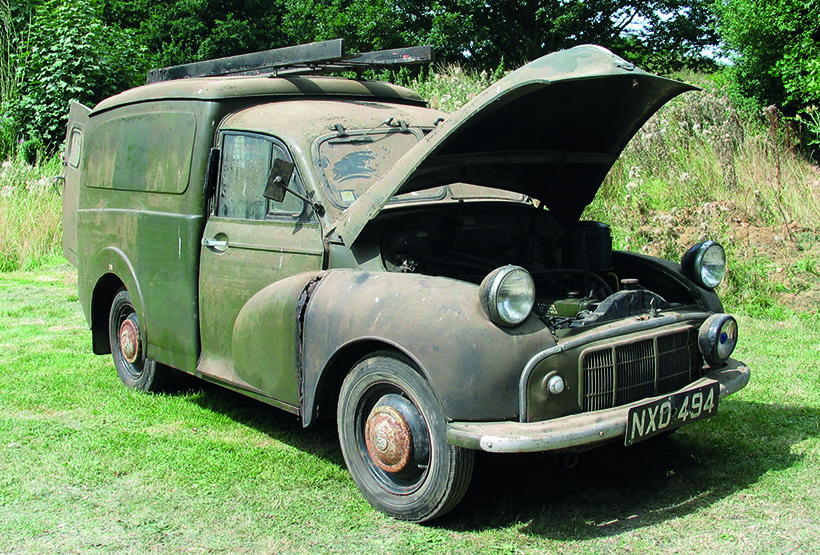
A Series II rubber winger in ‘as found’ condition, back in 2003.
GPO/PO Minor vans are defined into two groups, the mail vans, these are the ones we will be focusing on, were referred to by their load-space capacity in cubic feet, and in the case of the Minor it was recorded as 50cfs. Whereas the PO telephones were known as engineer’s vans and recorded by their laden weight either 5 or 6-cwt depending on the year of the vehicle.

The famous GPO opening driver’s screen on the early pioneer vans.
Rubber wings were fitted to the early GPO vans complete with headlights perched on top. This feature ceased during 1955 along with the primitive plywood facia dashboards that were fitted to these early pioneers. An observation on the rubber wings was that they all seemed to have the same dent in the nearside wing, always in the same place. An explanation that has been put forward suggests that the rubber wings were stored together prior to fitting, either at the factory or replacements at the GPO depots, the nearside bent inwards and the offside outwards, thus causing the indentation in exactly the same place! Spare a thought for the driver as these early vans had an opening driver’s half of the windscreen with the wipers fitted above the screen. There was no provision for a heater therefore to avoid getting the screen misted up in bad weather, the driver’s side of the split-screen was simply opened outwards!
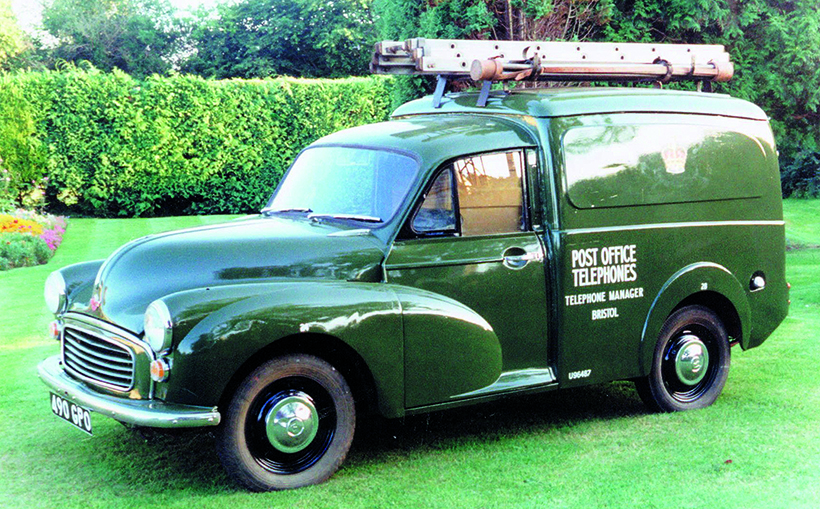
A Green engineer’s van seen in Midsommer Norton; it still carries its original GPO 490 registration. (Pic: Russ Harvey collection)
Engineer’s vans carried ladders, therefore a ladder rack was a permanent feature, these were originally wood and steel and painted black. The position of this rack changed during production, depending on the year, on the late engineer’s vans, these were again centrally mounted and made from aluminium. Storage bins were located in the rear cargo area on both sides, these bins were steel changing to aluminium on later versions.

The later, yellow livery and aluminium ladder racks are evident on these late engineer’s vans, seen on a Minor LCV Register’s event.
Mail vans had a rear door locking bar device for security purposes that could be opened from inside, this was operated via a lever just behind the driver, while the bar was visible externally across the rear doors. However, the last 2,000 vans were assembled without this device. Yale-type locks were another security feature that were added on both front doors from 1957, so that the ‘postie’ could leave his van to empty the post-box without having to lock the door, just slam it shut. Engineer’s vans had to make do with a special hasp on the rear door for locking with a padlock. On late vans from 1969, this feature was also abolished and the doors used the standard lockable handle.
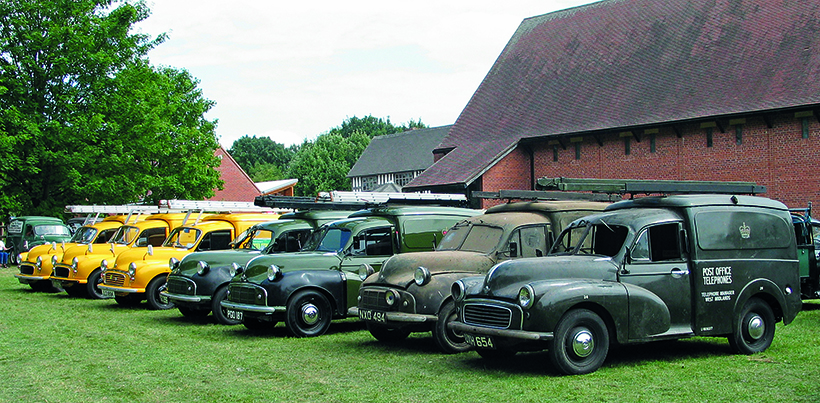
An impressive ‘side-by-side’ line up of PO Telephones engineer’s vans in various formats, from the early to the late, green and yellow vans!
Originally both mail and engineer’s van were supplied with chrome hubcaps, in an attempt to keep costs down, during 1962 they were delivered with just the wheels painted black.
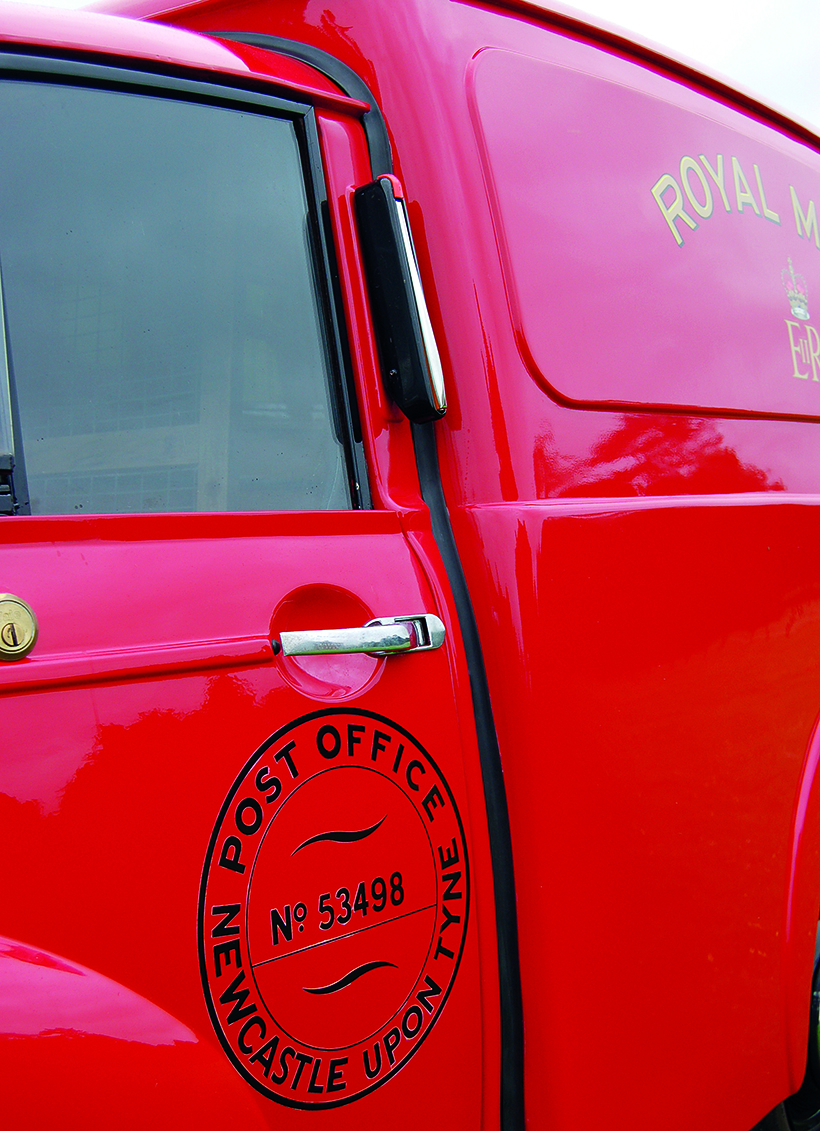
A roundel appeared on the passenger door confirming the serial number and allocation details.
A wood-framed partition covered with mesh separated the driver’s cab from the rear cargo area, the screen went from floor to roof. The screen on the mail van was only a half-screen, a change on later vans saw this become a plywood sheet and a very small mesh panel, whereas the screen in the engineer’s van went across the whole vehicle; on late vans the screen and frame were constructed from aluminium.
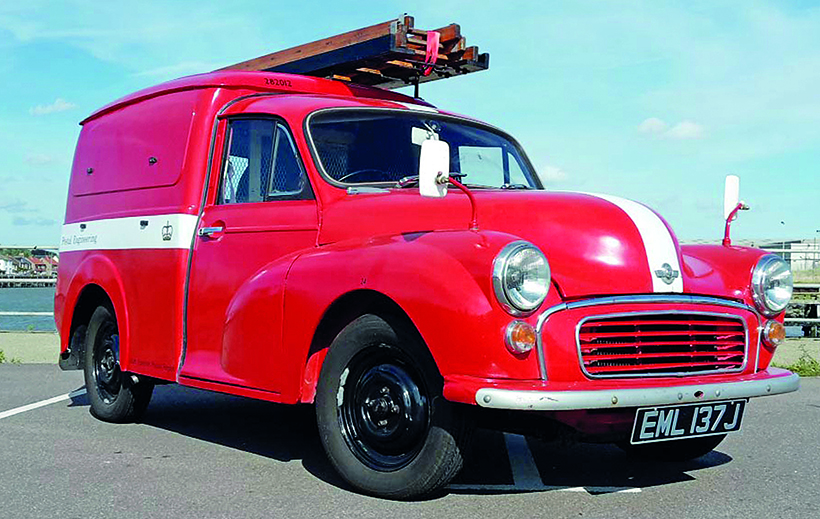
Postal engineering van complete with white stripe on bonnet and cab roof, it also carries the steel and wooden ladder rack. (Pic: Bob Cushing)
During 1962, the payload capacity of the LCV range was increased and with it came the much needed larger 1098cc engine, but as usual the GPO did things different and did not use the series V until 1964. During 1968, the LCV range came with the option of a payload increase to 8-cwt and being badged as Austin, but the Post office declined both of these options.
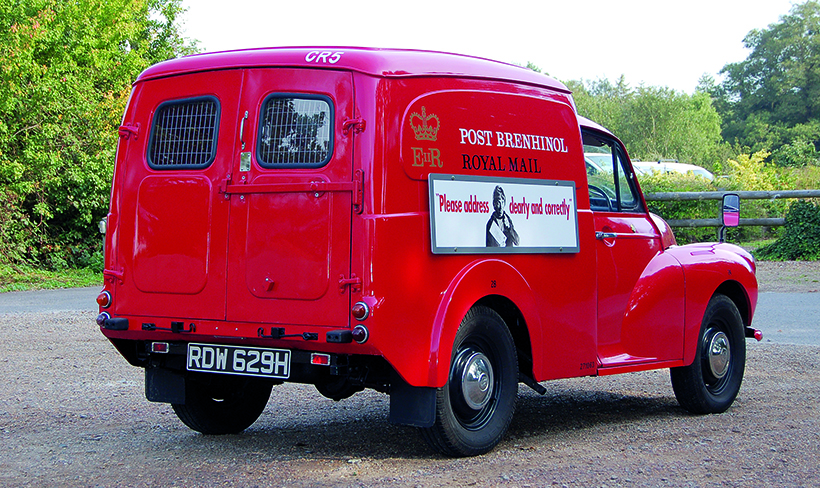
Series V ex-Royal Mail ‘bi-lingual liveried van that dates from 1970; its condition would be similar to the day it entered service.
Mail vans were painted red from 1953 to 1971 when production ceased, but from 1969, the shade changed from ‘Pillar Box’ to ‘Service’ red. The rear cargo area took on the colour of the outside, but prior to this it appeared in what is referred to as a matt finish of light buff, similar to that applied on civilian vans up to around 1963. The signage on the vehicle also remained the same ‘Royal Mail’ appearing in an arch on the side panels underneath was a St Edward’s crown with the initials EIIR below it. They also carried a large black roundel which was found on the nearside door, that indicated to which district the vehicle was allocated.
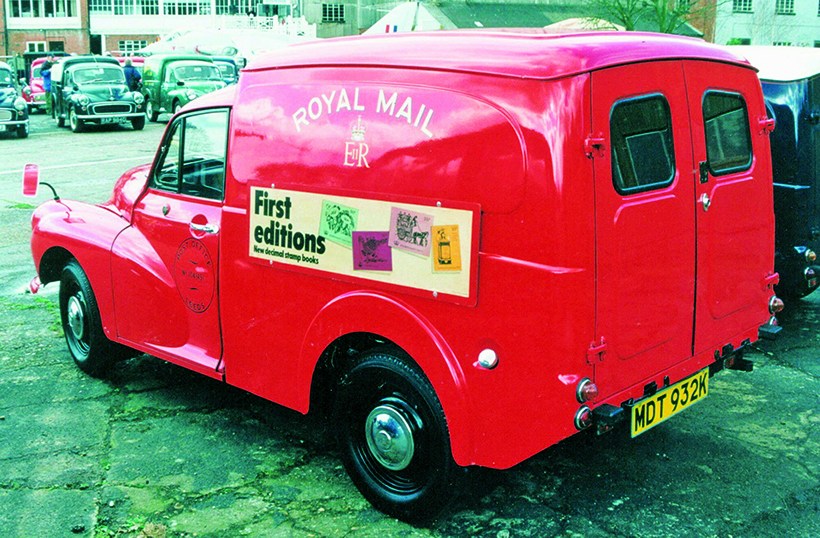
The last batch of 2,000 mail vans were supplied without the rear-locking bar, this van was sold at auction after covering only 70 miles in service!
Engineer’s vans were painted mid-bronze green from 1953 to 1969, when the colour changed dramatically to a brilliant yellow. The signage remained the same with Post Office Telephones and the Telephone Manager with the area of allocation located in front of the rear wheel arch on the lower half of the panel; while a larger St Edward’s crown was used on these vans, no initials were carried beneath it. The signage was in white lettering on the green vans and then green lettering on the yellow vans. The door surrounds on both models were painted black like the floors and from 1964 the dash was also treated in the same way.
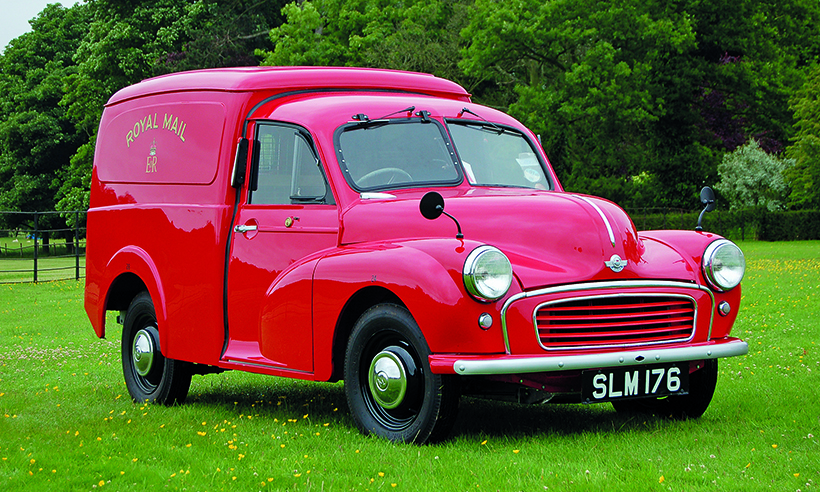
Series II mail van with opening windscreen, restored to an exceptional standard.
In Scotland, a different crown to rest of the UK was used. This is due to the fact that when Queen Elizabeth II came to the throne in 1952, the St Edward’s crown was adopted. Her Majesty was not the second Queen Elizabeth in Scotland and therefore the crown did not apply north of the border! So, the Queen’s crown of Scotland was used and applied to both engineer’s and mail vans for use in the north of the border. Incidentally, the same problem occurred with the K6 Red telephone kiosk, these were manufactured with a slot in which to insert the Royal Crown depending as to where the kiosk was placed!

Interior layout of a mail van, the screen is much smaller than in the engineer’s van.
Bilingual Welsh mail vans started to appear in 1969 when ‘Post Brenhinol’ was used on the side panels as well as ‘Royal Mail’. Late Welsh engineer’s vans were being delivered without PO Telephones written on them and in the same place was a large telephone handset!
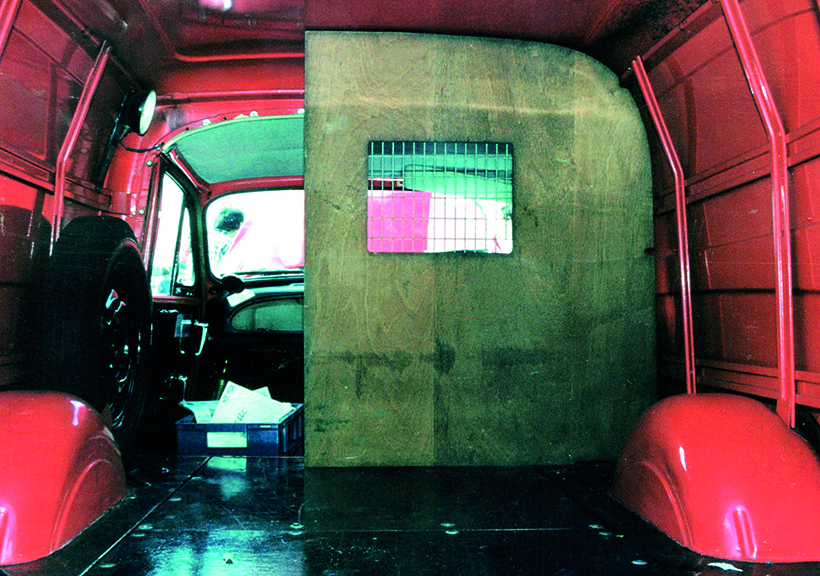
A plywood screen replaced the mesh on the last, 2,000 mail vans.
The first batch of Postal engineering (PoE) vans were supplied new from 1969 in the mail van livery, but later batches appeared with a stark difference as they had a white band painted around the waist of the van back, some also had a white stripe continued over the bonnet and the cab roof. Signage of Postal Engineering in black was on the stripe and they carried a gold crown. Some of these vans also carried the roof ladder rack, but less than 250 of these vehicles were supplied. The drivers of these vans were engaged on duties that including servicing and the checking of Post Office scales, but not as coin collection from payphone telephone kiosks which is often described as duty performed.
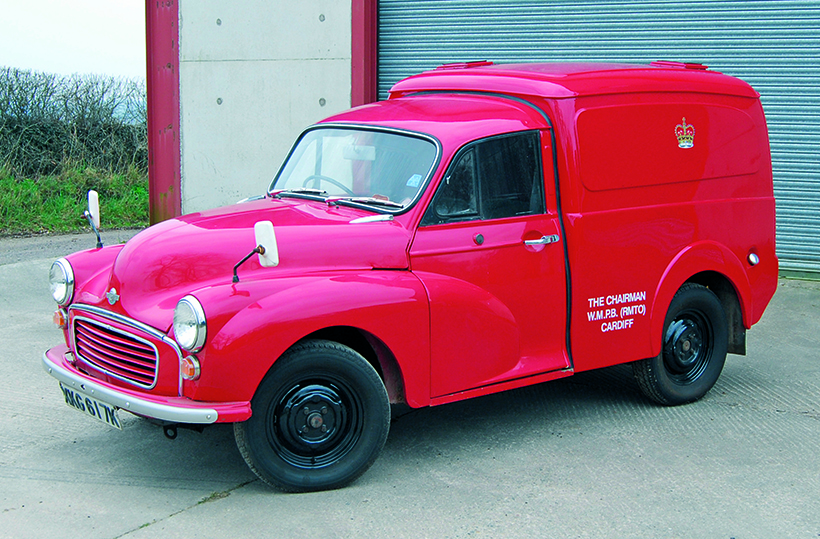
Ex-Royal mail driver instructor’s van, note the roof opening vents.
The GPO/PO were able to teach their staff to drive and then pass or fail them accordingly in line with the Ministry of Transport (MoT), the Minor van was the ideal vehicle. The Driver Instructor (DI) van was modified and benefited from ‘dual controls’, we will take an in-depth look at one of these in a future issue.
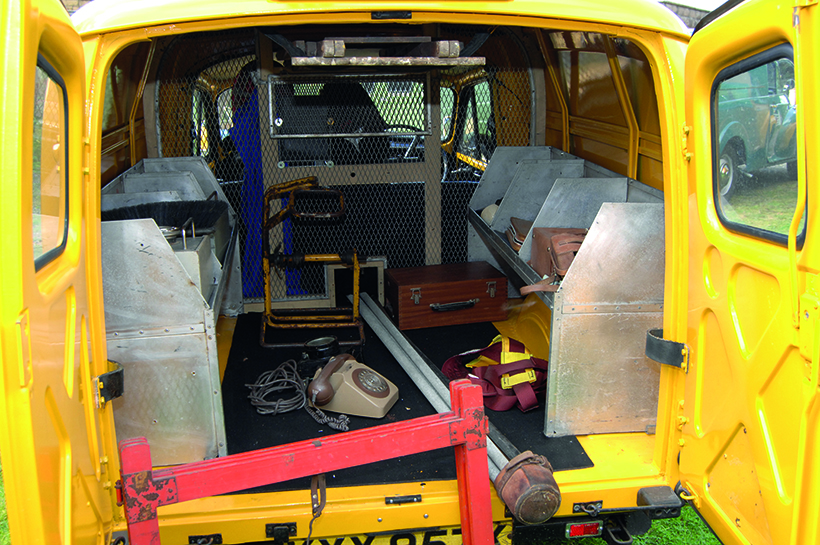
An alloy screen replaced the wood and mesh on the later engineer’s van.
GPO vehicles like other government departments initially carried London registrations. The first batch of production GPO Minors were allocated registrations in the NXO and NLW series, both were GPO block registrations and were shared with many other type/s of vehicles. The year 1963 saw the block issue of xxx GPO, and again in 1965 GPO xxxC and it was hardly surprising these were reserved for GPO vehicles, although PO was a Surrey registration mark. Block registrations for the GPO vans continued until October 1969 when the Post Office Corporation was formed, from this moment all vehicles were known as PO vehicles and carried local area registrations.
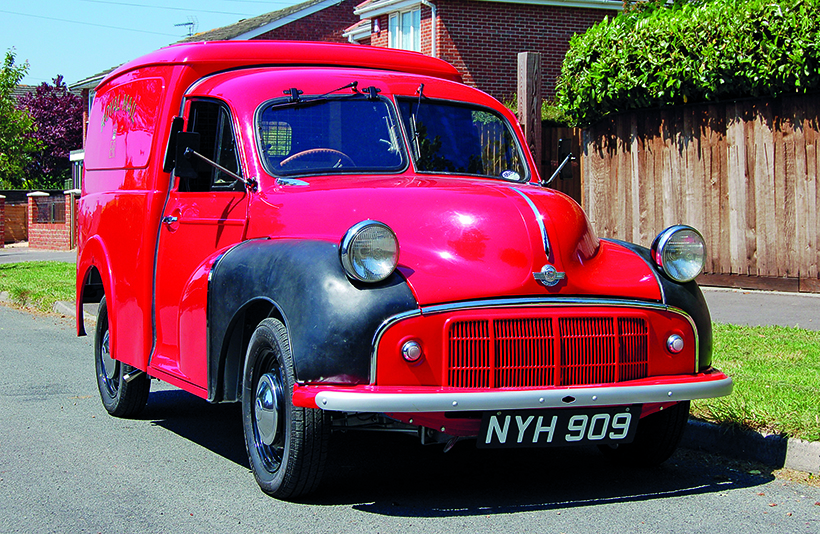
An ultra-rare Series II rubber-winged Royal mail van.
Some of the ‘standard’ GPO/PO features mentioned might not apply to all of their fleet. As is always the case with GPO/PO Minors there were exceptions to the rule, especially towards the end of production when it was a question of using what was available, but as a guide you would normally expect to find most of these; rear door stays were mounted externally rather than on the inside as on the civilian vans, black metal door panels and a chrome pull handle were fitted and not that the fibreboard versions used on the standard LCV range.
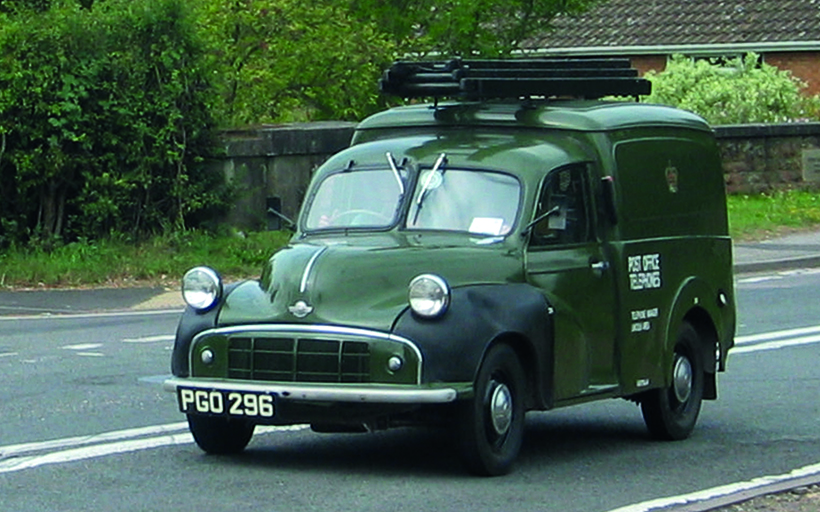
A Series II rubber-winged telephones engineer’s van.
The GPO/PO were also more cautious about health and safety, even in those days and insisted all vans carried first aid boxes and fire extinguishers. Rubber buffers were also fitted to the bonnet corners to avoid injuries and the wheels were held in place by double-sided nuts to ensure that they were never fitted incorrectly. They never used the dome glass lights, as they continued to use the flat type lens. The chassis was painted silver as any failure or cracks could easily be identified. Many other items can be added to the list, metal triangular inserts were screwed into the openings at the bottom of the rear doors, tax disc holders were attached to the dash as well as the fitting of mudflaps to the front and rear.
For a money-saving subscription to Heritage Commercials magazine, simply click here




